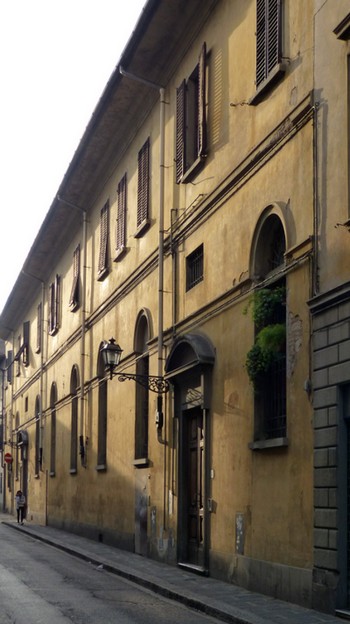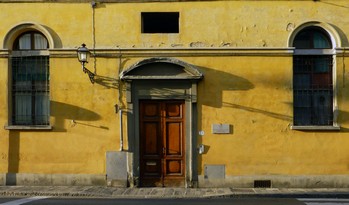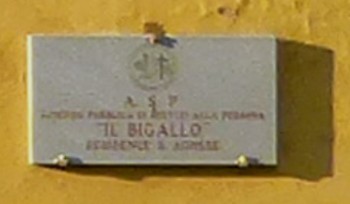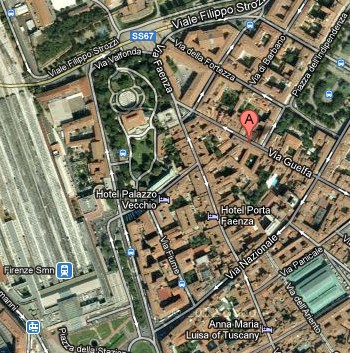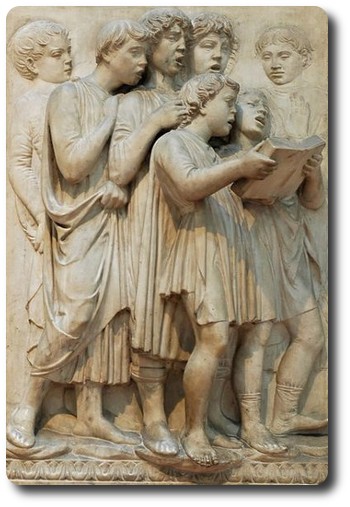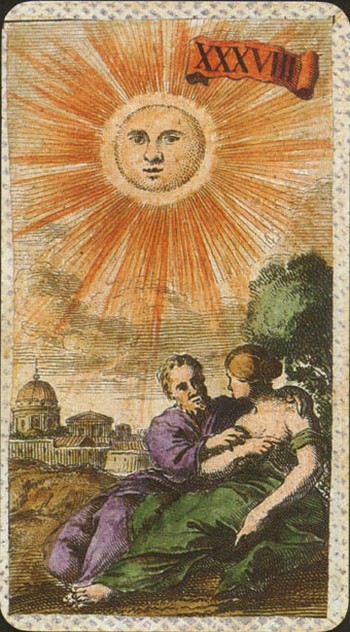1674-1685 – MINCHIATE AT THE EVANGELISTA ACADEMY
by Franco Pratesi, 20.10.2012
IntroductionAfter several months of study in the AOIF, essentially on the basis of the Inventory,(1) I had the opportunity of a useful conversation with its author herself,(2) who had worked hard on this archive, and on several others as well. Lucia Sandri has been one of the few scholars to consider that spending my time in searching ancient documents on playing cards was a reasonable occupation, and has been willing to discuss with me about further possible sources of data. As far as the AOIF is concerned, she has called my attention on its Aggregati section, or, to be exact, the section “Enti Aggregati e Depositati”. From the history of theatreThe performances organised in Florence since the 15th century are considered as fundamental for the history of modern theatre, since its beginning in the middle ages, be they of the religious or the profane sector. Any extended treatise on this topic usually begins precisely with this Florentine environment, and the local activities in this field. AntecedentsThe time of interest here is near the end of the 17th century. There is however an intriguing reference to earlier times, which I am not able to avoid quoting and connecting with the facts here under examination. We have to come back to Savonarola’s times in Florence, and even earlier on. The AcademyIn the 17th century, some Academies were formed out of the common basis of the Compagnia di San Giovanni Evangelista. They were justified by several reasons, one was to gather members interested in particular performances, or in pastimes, but the main reason was to allow older members to remain in that environment, because members had to leave from the traditional Company as soon as they became twenty-four years old. Book 11837 «Entrata e uscita» (1674 – 1682)This is a booklet with 48 unnumbered leaves of 20x27 cm. The cover is the original sheet of paper, thicker than that of the pages and uniformly coloured. It contains two separate parts of entries. The first part is dedicated to incomes; then we find several blank pages, and then the second part, in which expenses are recorded.The beginning is: «Entrata tenuta da me Zanobi Sacchi come Guardiano della Compagnia di San Giovanni Evangelista dove si terrà minutamente conto del danaro che si caverà dalla Cassetta del Trattenimento delle Minchiate cominciato il dì 7 di Maggio 1674.» Thus, we have a book for registering the drawings from the box, in which the fees for playing Minchiate were inserted. (It is not evident for me whether to insert the money had been all the players, or just the losers of the games.) The box is differently mentioned in the following pages, sometimes as Cassetta del Trucco e Minchiate, indicating that the players also had a kind of early billiard available in addition to Minchiate packs. In other cases, we read Cassetta dell’Adunanza; “Adunanza” can be translated as gathering, but it is again not evident, for me, whether this really was a second box, used when the Academics had periodical or special meetings. From May 1674, the records go on up to end September 1682. We can thus follow the incomes of the Academy for more than eight years. In the course of time, we find further names of responsibles, for instance Francesco Viviani in 1675 and Giovanni Francesco Sassi Camarlingo in 1678. The main part of the entries recorded is obviously related to the money withdrawn from the box – the book had been stated at the beginning to be compiled precisely for that purpose. It is interesting however that a not negligible part of the incomes derived from selling used Minchiate packs. Who could the purchaser of these old packs be? In principle, anybody could wish to acquire a low-cost pack that could still be used for years of play at the familiar level. Usually, we do not find the names of the buyers – we only read that it had been the servant of the Academy to care for selling a few packs. In a significant part of the sales, however, we have the name of the buyer: Giovanni Domenico Molinelli, nobody less than the cardmaker, the same who provided most or all the new packs acquired by the Academy. Which kind of refurbishing treatment could be made on the cards by the cardmaker is unknown to me, but it is certain that these used cards were addressed to a second life – in case just sold out by the maker as used samples together with or instead of new ones; probably with updated stamps. The second part of the records begins with a statement similar to the initial one. «Uscita tenuta da me Zanobi Sacchi come Guardiano della Compagnia di San Giovanni Evangelista dove si terrà conto minutamente delle spese che si faranno per servitio e bisogno della nostra conversazione e trattenimento delle minchiate per i fratelli della suddetta Compagnia cominciando dal trattenimento di questo dì 7 di Maggio 1674.» In this part of the records, we find several different entries. They often correspond to ordinary and periodic purchases of items required for the regular functioning of the Academy, such as candles, oil, or new Minchiate packs. Other entries correspond to extraordinary expenses, typically for furniture. For instance, several additional stools, or a “Cappellinaio a 12 pioli”, a clothes-hook with twelve pegs, on 20.7.1674. A record of 8 s. on 22.7.1674 is due to the tax paid for renovating the licence to play Minchiate. However, the entry that has been the most surprising for me has been recorded on 13 September 1674, as follows: « L. 4 tanto sono per costo di uno staccio con la sua rete quale deve servire per asciugare le carte portò Benedetto nostro servo.» This is nothing else than a sieve, a very ordinary tool (seemingly a rather large one) that in an extraordinary way we find connected with playing cards: its net was used for drying cards! After all, what is the most surprising fact is that playing cards could go by then through washing and drying treatments, such as we would be ready better to figure out in our time, with polymeric surface layers certainly unavailable in the 17th century. The price of a pack was fixed by then at L.1 s.16 d.8. Of course, prices with just integral numbers of Lire are more likely expected for a dozen packs, and indeed the price indicated corresponds to just L. 22 for a dozen packs. Only in a few initial purchases, the price was somewhat lower: L. 20 for a dozen. The seller of the new packs, and at the same time often acting as the buyer of the used ones, was always Giovanni Domenico Molinelli; probably after his death, we find mentioned in some of the latest records his brother Giovanni Francesco. Some additional information on this family of cardmakers can be found in a previous study.(8) Book 11838 «Libro maestro A» (1682 - 1685)This book is different from the previous one for several aspects, but it essentially appears as its continuation. On first inspection, the most evident difference is that this book has been bound with a parchment cover, with a heraldic single-headed eagle painted on the front cover itself. Inside, however, we find a book formed by three parts of 16 leaves each, 22x30 cm, for the same total of 96 pages, most of which are left blank here.The title written on the cover “Libro maestro A”, ledger A, implies that the entries are ordered with some criterion, and not just listed one after another in the course of time, as it occurs in the following receipt book. The most important information for us is to verify which were the playing cards acquired, and how many of them. Moreover, we would like to know who was the cardmaker and which was the price. In this book, the cardmaker is not mentioned. The price is usually not recorded in a suitable way, because as a rule the entry with Minchiate contains together various amounts of candles, oil, or other goods useful for the Academy. However, from the cases in which a given entry only corresponds to packs of Minchiate, we can deduce that the price remained constant in these years too, at L.1 s.16 d.8 for one pack, L. 22 for a dozen, except for a few cases in the latest records in which we find the price reduced to L.20 for a dozen. A particular information can be found on 7 November 1483, in which the move is recorded from the house in Borgo Santi Apostoli (still present with this name) to the new place in Via del Amore (now the initial part of Via Sant’Antonino). We know that there had been debates between this Academy and the Compagnia di San Paolo, so that the Academics apparently found more suitable for their gatherings to lease a house or a flat elsewhere in town, and no longer in Via dell’Acqua. Among the entries recorded in 1684, we find for each member of the Academy the amount of money that he had given as account for the performance in their theatre of a tragedy, with a title that reminds us familiar plays of nowadays, “Il Maggiore Mostro del Mondo”. Apart from any further detail, we are interested to know the names of these people, which can be listed as follows: Domenico Del Sera, Francesco Nardi, Rev. Giovanni Frangioni, Rev. Pietro Saltini, Antonio Averani, Giovanni Antonio Francesco Sassi, Zanobi Mainardi, Bernardo Filippini, Lorenzo dell’Erede, Francesco Maria Rossi, Clemente Zurli, Rev. Andrea Perati. To find priests among the regular players of Minchiate is a great satisfaction for anybody remembering the events of Savonarola’s time. It is interesting to note that Minchiate correspond to the only kind of playing cards mentioned. Actually, playing Minchiate was not the only game enjoyed by the company: they had a Trucco available as well, and for this object we find several entries, as for acquiring new balls or malls, or for having them repaired. Trucco was a predecessor of billiard, some kind of table pall-mall. Book 11839 «Quadernuccio di riceute dell'Accademia de' fratelli di San Giovanni Evangelista» (1682 – 1685)This book belong to the series, but corresponds to a minor member, as already indicated by its smaller dimension, 9x20 cm. The leaves of this book are 64, but only the first six have been written. Minchiate packs acquiredUsing both books described, we can compile the following Table for the monthly purchases of Minchiate. If anybody wishes additionally to know how many packs were acquired exactly at which dates, the Appendix below reports such data, similarly extracted from the books under examination. 
Some of these numbers for the Minchiate packs purchased are not wholly reliable. Sometimes it is only stated that the corresponding money amount has been given in account for cards provided; in a few other cases, especially for some intermediate years, the money amount recorded is a cumulative value for candles and Minchiate. ConclusionWe have followed an amazing change: the Evangelista Company of young men, mostly involved with theatre and in earlier times with music and dancing, was first known in Savonarola’s times for their strong fight against any form of gambling and leisure, whereas we find here their offspring having selected Minchiate playing as one of their few diversions. (1) Istituto degli Innocenti |
|
Appendix – Minchiate packs acquired by the Accademia
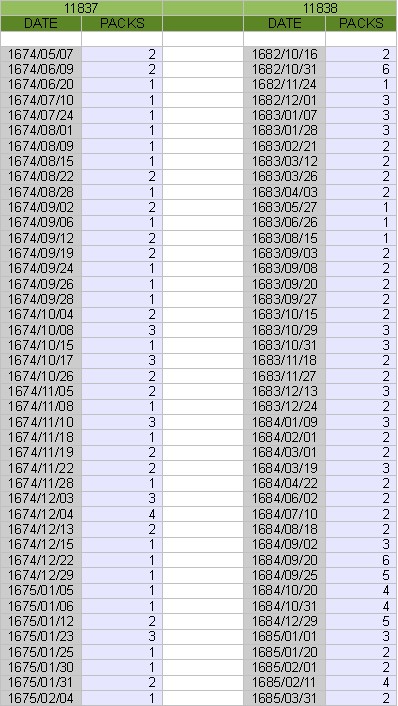 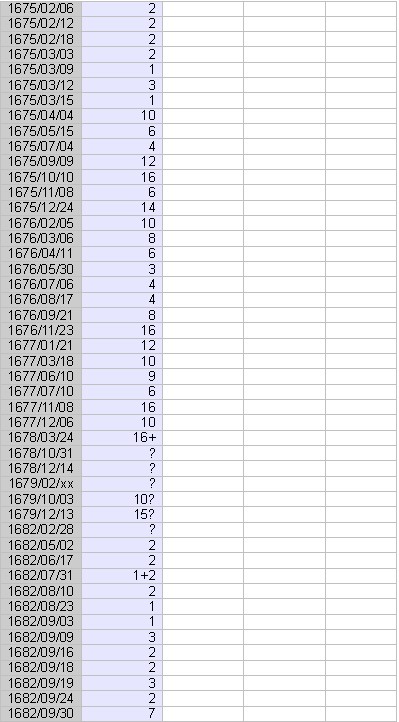 |
|
Side bar pictures and text added by Lothar Teikemeier
